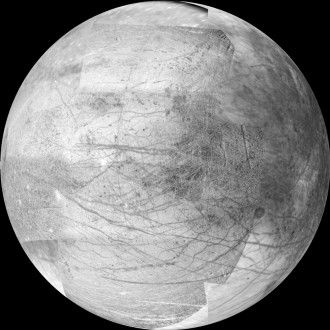The Young Scientist: Looking for Life on Other Planets
The Young Scientist: Looking for Life on Other Planets
October 22, 2024By Aileen O’Catherine

When scientists search for life beyond Earth, what should it look like? It’s easy to think of life as looking like we do — or like the plants, animals and ocean creatures we know. It’s fun to think about ETs, or extraterrestrials, as those little green men with big eyes. But life takes many forms, not just the ones we’re familiar with today, and the Earth itself has contained many different kinds of life in the roughly 4.5 billion years it has been around. In a sense, Earth has been many different Earths, not just the one we know now. So, how do we know what to look for when we look for life? How will we know if we are alone in the galaxy? Or have we met other kinds of life already and were unaware of it?
Astrobiology studies the origin, evolution and distribution of life in the universe. Astrobiologists focus on three basic questions: How does life begin and evolve? Is there life elsewhere in the universe? How do we search for life in the universe?
On Earth, we are surrounded by life, but we don’t know if life is common or rare elsewhere in the universe. We don’t know how many different forms life can take, or what kind of timescales it takes for life to form. For many years, scientists thought that if an atmosphere on an exoplanet contained oxygen, there would be signs of life there. Since then, theoretical models have been created that contain oxygen but don’t contain life. Today, astrobiologists are interested in a more general definition of life that does not depend on specific chemistry but is more connected to what life is as a process that organizes chemistry. It may be time to stop looking for life as we know it and to begin looking for life as we don’t know it.
Life forms that exist in extreme environments, “extremophiles,” thrive in conditions that would kill anything else. The superheated vents on the ocean floor, the dry valleys of Antarctica and the boiling geysers of Iceland contain extremophiles that may be similar to life on distant worlds.
To really understand the possibility of life, we need to find a second example somewhere else. The salty ocean beneath the icy crust of Jupiter’s moon Europa may hold life as we don’t currently know it. On Oct. 10, NASA will launch the Europa Clipper on a mission to investigate the icy moon and look for signs of possible life in its extreme environment.
Astrobiologists search for chemical “biosignatures,” which are molecules or combinations of molecules that might signal life. Europa has the essential ingredients for life as we know it: water, chemistry and energy.
In the beginning, there was the big bang, and the simplest elements formed. Then, organic molecules of carbon attached themselves to other molecules to create a self-sustaining, self-replicating system of life. Earth developed its forms of life. This may have happened a few times or millions of times on other planets, or it could have happened only here. We don’t know the answer. In the meantime, the search for life continues.



